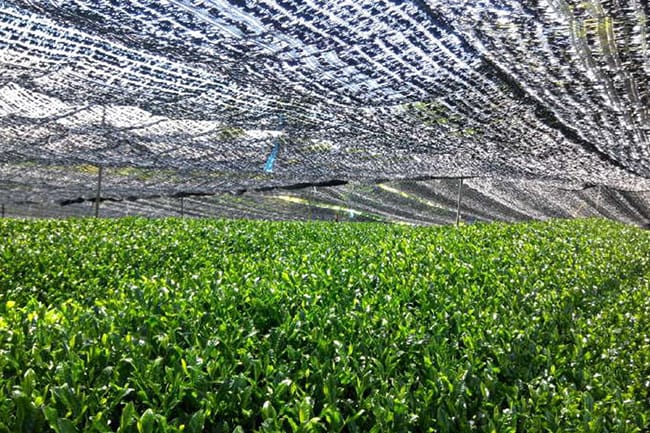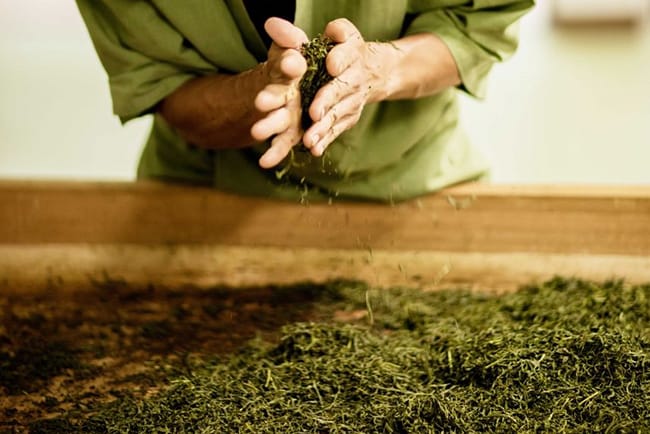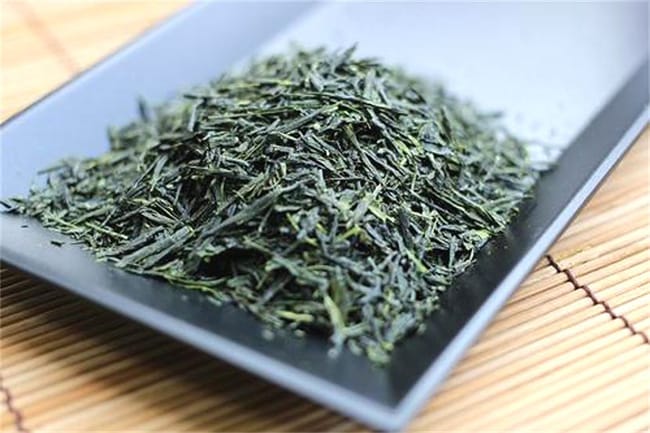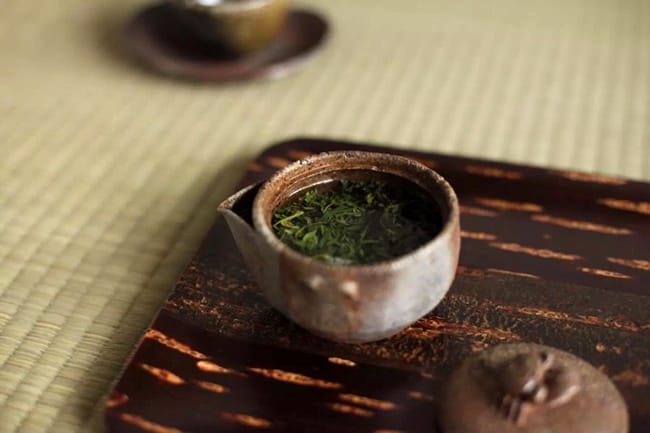Last Updated on 08/30/2021 by Desmond
Matcha may be the first-come impression that many people talk about Japanese tea. Actually, Japanese tea got many types, even though they are almost green tea. Among them, Gyokuro is honored as the top grade, just as Matcha. Typically, Gyokuro tea’s market price is nearly about 1 dollar per gram. That seems not too expensive, especially after you know how it is made.
CONTENT
What Is Gyokuro Tea
Gyokuro’s Japanese name is ぎょくろ, which means jade-like dew. Gyokuro was a merchandise name of the Yamamotoyama Tea Company, invented and named by the sixth owner Yamamoto Kahei in 1835. He was just 18 years old and had already a great tea master.
After he promoted this tea at Edo, the excellent quality and flavor attracted and was loved by many nobles and intellectuals soon, and became one of the Edo famous products.
Some senior tea lovers may associate with another tea- Enshi Yulu from China. They got the same-meaning name, and both are steamed green tea. But they are totally different at the cultivation, processing, flavor, and judgment criteria of quality.
Why Is Gyokuro So Rare?
There is a view that Gyokuro is a kind of high-grade Sencha because they got similar processing. It is just a narrow classified way and telling that Gyokuro is more high-grade. At the tea appreciation party, Gyokuro is usually classified separately. It is like the Jinjunmei black tea, which belongs to one type of Lapsang Souchong, but also be classified independently because it has a higher quality.
A higher-quality signifies a higher price. As the top Japanese tea, Gyokuro’s price is much higher than the general Sencha. And this quality is base on harsh, strict, and delicate cultivation and processing.
Unique Cultivation – Shade Grown
Most Japanese teas are made from a Camellia Sinensis named やぶきた. It is grown in many tea plantations in Kyoto(Uji), Saitama(Sayama), Shizuoka, and Kagoshima, etc. These places are also the primary production areas of Gyokuro tea.
As the same situation in other tea-producing countries globally, the spring flush tea is typically regarded with the highest quality, so is Japanese tea. Yes, Gyokuro is also harvested in spring, the local saying is ichibancha(いちばんちゃ.)
The biggest characteristic of Gyokuro tea is its unique cultivation pattern. Every spring, when the new buds just sprout out on the branches, tea farmers will shade the tea trees by a shed made from straw, reed, and bamboo mat, preventing them from sunlighting.
This pattern is called shade cultivation. The new buds will grow for about 20 days under the shade before picking. By away from the sunlight, the leaves work less with the photosynthesis, inhibits the theanine transformation to the tannin(a substance that gives the bitter taste.) So the bitterness and astringency of the leaves will reduce and become fresher and sweeter. The leaves will get the so-called 覆い香(shade aroma) at the same time.
Besides, due to the photosynthesis has been influenced, the chlorophyll contained in the leaves will increase a lot. As a result, it will finally make the tea infusion looks more green like jade.
Nowadays, almost all the shades are made from black mesh and get a shading coefficient high to 90%. The top of the shade is about 2m from the ground, convenient for the management and picking. Some plantations(especially those located at Mie Prefecture) take another shading way. They cover every tea tree’s crown alone and reduce the shading time to one week. Most Japanese tea masters disapprove of the Gyokuro grown in this way and just called it shaded tea(Kabusecha, かぶせ茶.)
Different from the major tea producer countries like India and China. Even though Japan has a large total tea plantation area, it has a limited production due to the smaller national-territorial area. And Gyokuro is only made from the spring flush leaves. Some of them will also be processed into Matcha, so Gyokuro becomes rare and gets only a few hundred tons annual outputs. And this also leads to a relatively higher price.
Delicate Processing
You may ever hear about the craftsmanship spirit of the Japanese. Every product made from Japan can gives the impression of being meticulous; so is the tea.
As the top Japanese tea, Gyokuro will be processed in a hand way by tea masters. The eligible leaves will be sent to steaming after picking to stop fermenting. Steam fixing is a very traditional and old method, which is taken by most Japanese teas. Unlike the fire fixing method in other countries, steaming is more focused on remaining and increasing the original flavor of the leaves rather than changing them too much.
Leaves after fixing will be placed for cool down and drying for a while, and then tea masters start their rolling job. This is a unique manual craft called Uji Gyokuro Rolling, and it is recorded in the intangible cultural heritage catalog. Tea masters will roll the leaves with their hands carefully, again and again, till they become tiny needles. Finally, pick out the stems and unhandsome leaves, then dry.
Typically, Gyokuro tea is just for one time brewing because its leaves are too delicate and tiny. However, this only one brew still brings an unexpected and strong flavor.
The Charming Umami
There is a significant difference between Chinese green tea and Japanese green tea on the flavor. Chinese green tea focuses more on the fragrance, color, mouthfeel; and Japanese tea cares about the taste more, properly speaking is Umami.
The umami flavor is verified and named by Kikunae Ikeda in 1908. He also isolated the glutamic acid from kelp, a substance that can strongly express the umami flavor and the main component of MSG.
A characteristic of spring tea is rich in amino acids, so is Gyokuro. And because it has been shade-grown, the amino acids(theanine and glutamic acid) are great remained in the leaves. Then the steam fixing also destroys the amino acids less, rather reduces the tea polyphenol and tannin content, improving the umami flavor to a certain extent.
The Gyokuro after drying can be said the condensed essence of the Umami substance. With the unique rolling craft, making this flavor can be extracted much easier. This is why the Japanese love Gyokuro and regarded it as the best.
The umami flavor of Japanese is often described as nori and kelp-like, making people reminiscent of the taste from the sea; and this accord with Japan the Island Country feature. And among the Chinese tea, white tea is also famous for being rich in amino acids. But white tea didn’t been shaded during cultivation, the amino acid just remained in the “Hao.” And it also not being fixating but slight fermented. So the umami flavor of white tea is far away from the Japanese tea, the impression it left to people is more like the fresh fragrance from the mountain plants.
Worth knowing that after people knew the truth about the charming umami, the nitrogenous fertilizer began to vast used for pursuing the perfect flavor. The result was quite satisfactory, the tea’s umami flavor improved greatly, but the tea seems no longer organic.
Benefits & Potential Side Effects of Gyokuro
Although there are many differences from the common teas on the processing and preparing, Gyokuro tea still brings various benefits as the same, like:
- antioxidant
- anti-aging
- anti-inflammatory
- weight loss
- manage diabetes
- mind refreshing
- potential anti-cancer effect
- ……
All these benefits are primarily from tea polyphenols(EGCG) and caffeine. Once we mention caffeine, many people will be worry; especially many articles said that Gyokuro tea even contains much more caffeine than coffee.
We’ve talked about there are many factors that influence the caffeine in your cup in my other post(here.) Due to the ingredients in Gyokuro are very easy to be extracted during brewing. To people who are sensitive to caffeine, it may more easily lead to nervousness and insomnia.
As far as some people thought that Gyokuro tea tastes like MSG and may be harmful to health. That is a view without any reference value. Because their flavor components are not totally the same, the most important thing is that MSG has been proven safe unless you over intake it.
How To Make Gyokuro Tea
It will be a great waste if you brew Gyokuro tea in the normal way. Typically, we use about 60℃ water to making Longjing and Baihao Yinzhen; this is a very low temperature for making tea. But to Gyokuro, it is even more extreme; most of the time, we will brew it with 40-50℃ water.
- Prepare 5g Gyokuro leaves and a 200ml white porcelain Gaiwan. It will get a better experience if you are making it with the Japanese teawares. And the purple sand teawares are not suitable for this tea;
- Rinse and pre-heat the teaware with boiling water;
- Put the leaves into the Gaiwan, cover, let them get pre-heat by the remained warm, then feeling the fragrance;
- Wait for the boiling water to cool down to 40-45℃;
- Add the water in till to the 3/4, cover, steep for about 2 minutes;
- Pour all the infusion out to the teacup, do not leave one drop;
- Enjoy;
When making the second brew, you can properly raise the temperature to 50-60℃ and extend the brewing time because most of the flavor has been extracted at the first brew. Typically, Gyokuro tea is hard to make out more than 3 rounds.




